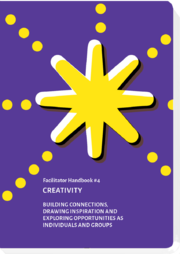Goal
Mindmaps bring structure and order thoughts. The help learners to store knowledge and to understand the connections between certain aspects.
Steps
Ask learners to write a central topic or a leading question on a paper (here: Creativity).
Encourage them to write the subordinate aspects or associations close to the central word. Try to follow a structural logic and connect the aspects with lines or different kind of arrows, like in the illustration.
Experience
Mindmaps might be developed on posters in a group process. They might help individuals in their research, or even be used as an electronical tool.
However, as the tool is today a standard, one could look for alternatives such as Problem Trees, Ishikara Diagrams,...
Variation
Applications for electronic mindmapping are especially effective, as everything can be rearranged or enlarged. The open source electronic tool FreePlane helps you to change, rearrange, add and connect ideas, words or phrases. Even complex knowledge can be arranged in such electronic maps.





